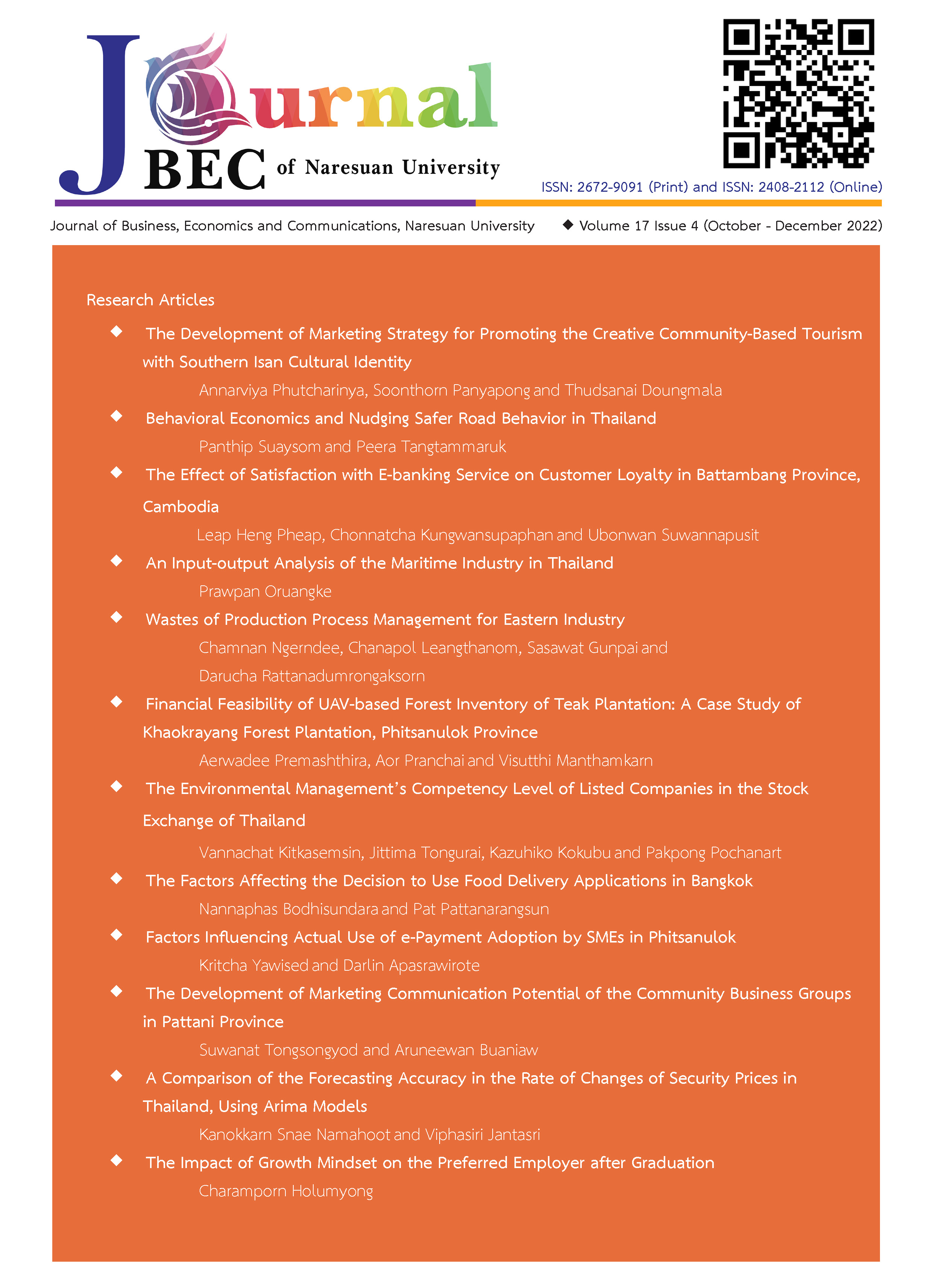Financial Feasibility of UAV-based Forest Inventory of Teak Plantation: A Case Study of Khaokrayang Forest Plantation, Phitsanulok Province
Main Article Content
บทคัดย่อ
Unmanned aerial vehicles (UAVs), commonly known as drones, are increasingly used in forest inventories and have the potential to increase labor productivity in teak forest plantations. However, the application of this new technology requires substantial investment in drone equipment and training operators. Therefore, the objective of this study was to analyze the cost to the relevant agency of using drones in forest inventory to provide forest stand volume and growth data. The costs of two methods of forest inventory were compared, namely the traditional, ground-based, forest inventory method and the drone assisted method. The study was conducted in the Khaokrayang Forest Plantation of the Forest Industry Organization, located in Phitsanulok province, Thailand. A cost-benefit analysis was applied to compare the economic value over a 4-year period for each inventory method. Other uses of drones in other plantation management activities were assessed in addition to forest inventory, such as forest surveillance or tree survival surveys. The data were collected using UAV-based forest inventory and in depth interviews on the cost of the traditional method and other forest management activities. The results showed that the costs of forest inventories could be lowered using drones. The case involving the of drones for forest inventory along with other plantation management activities, such as tree survival assessment and surveillance surveys, was most feasible with a net present value of THB 87,413, a benefit-to-cost ratio of 1.277, an internal rate of return of 51.36% and a payback period of one year and four months.
Article Details

อนุญาตภายใต้เงื่อนไข Creative Commons Attribution-NonCommercial-NoDerivatives 4.0 International License.
เอกสารอ้างอิง
Anderson, K. and Gaston, K. J. (2013). Lightweight unmanned aerial vehicles will revolutionize spatial ecology. Frontiers in Ecology and the Environment, 11(3), 138-146.
Clothier, R. A., Greer, D. A., Greer, D. G. and Mehta, A. M. (2015). Risk perception and the public acceptance of drones. Risk Analysis, 35(6), 1167-1183.
Gardner, T. A., Barlow, J., Araujo, I. S., Ávila-Pires, T. C., Bonaldo, A. B., Costa, J. E., Esposito, M. C., et al. (2008). The cost-effectiveness of biodiversity surveys in tropical forests. Ecology letters, 11(2), 139-150.
Haidari, L. A., Brown, S. T., Ferguson, M., Bancroft, E., Spiker, M., Wilcox, A., Ambikapathi, R., et al. (2016). The economic and operational
value of using drones to transport vaccines. Vaccine, 34(34), 4062-4067.
Koh, L. P. and Wich, S. A. (2012). Dawn of drone ecology: Low-cost autonomous aerial vehicles for conservation. Tropical Conservation Science, 5(2), 121-132.
Markiewicz, A. and Nash, L. (2016). Small unmanned aircraft and the U.S. forest service : Benefits, costs, and recommendations for using small unmanned aircraft in Forest Service Operations. White Paper, U.S. Department of Transportation.
Paneque-Gálvez, J., McCall, M., Napoletano, B., Wich, S. and Koh, L. (2014). Small drones for community-based forest monitoring: An assessment of their feasibility and potential in tropical areas. Forests, 5(6), 1481-1507.
Puliti, S., Ørka, H. O., Gobakken, T. and Næsset, E. (2015). Inventory of small forest areas using an Unmanned Aerial System. Remote Sensing, 7(8), 9632-9654.
Turner, I. L., Harley, M. D. and Drummond, C. D. (2016). UAVs for coastal surveying. Coastal Engineering, 114(August), 19-24.
Whitehead, K. and Hugenholtz, C. H. (2014). Remote sensing of the environment with small unmanned aircraft systems (UASs), part 1: A review of progress and challenges. Journal of Unmanned Vehicle Systems, 2(3), 69-85.
Zhang, J., Hu, J., Lian, J., Fan, Z., Ouyang, X. and Ye, W. (2016). Seeing the forest from drones: Testing the potential of lightweight drones as a tool for long-term forest monitoring. Biological Conservation, 198(June), 60-69.


